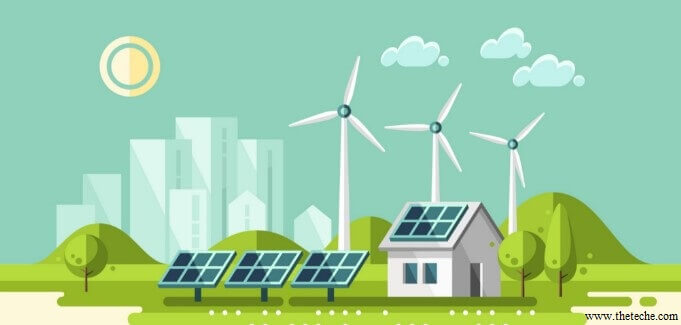Alternative energy refers to energy sources which could replace coal, traditional gas and oil, all of which increase the atmospheric carbon when burned as fuel.
Renewable energy implies that it is derived from a source which is automatically replenished or one that is effectively infinite so that it is not depleted as it is used. Coal, gas and oil are not renewable because, although the fields may last for generations, their time span is finite and will eventually run out.
There are many means of harnessing energy which have less damaging impacts on our environment and include the following:
Solar energy is one of the most resourceful sources of energy for the future. The reason for this is that the total energy received each year from the sun is around 35 000 times the total energy used by man. However, about one third of this energy is either absorbed by the outer atmosphere or reflected back into space. Solar energy could be used to run cars, power plants and space ships. Solar panels on roofs capture heat in water storage systems. Photovoltaic cells, when suitably positioned, convert sunlight to electricity.
Wind power is another alternative energy source that can be used without producing by-products that are harmful to nature. The fins of a windmill rotate in a vertical plane which is kept vertical to the wind by means of a tail fin and as wind flow crosses the blades of the windmill it is forced to rotate and can be used to generate electricity. Like solar power, harnessing the wind is highly dependent upon weather and location.
The average wind velocity of Earth is around 9 m/s, and the power that could be produced when a windmill is facing a wind of 10 m.p.h. (i.e. around 4.5 m/s) is around 50 watts.
Hydroelectricity is achieved by the damming of rivers and utilising the potential energy in the water. As the water stored behind a dam is released at high pressure, its kinetic energy is transferred onto turbine blades and used to generate electricity. The system has enormous initial costs but has relatively low maintenance costs and provides power quite cheaply.
Tidal power utilises the natural motion of the tides to fill reservoirs which are then slowly discharged through electricity-producing turbines.
Geothermal energy is obtained from the internal heat of the planet and can be used to generate steam to run a steam turbine which, in turn, generates electricity. The radius of the Earth is about 4000 miles with an internal core temperature of around 4000°C at the centre. Drilling 3 miles from the surface of the Earth, a temperature of 100◦C is encountered; this is sufficient to boil water to run a steam-powered electric power plant.
Although drilling 3 miles down is possible, it is not easy. Fortunately, however, volcanic features called geothermal hotspots are found all around the world. These are areas which transmit excess internal heat from the interior of the Earth to the outer crust which can be used to generate electricity.
[sc_fs_faq html=”true” headline=”h2″ img=”” question=”What are Renewable Energy Sources?” img_alt=”” css_class=””] Solar energy, Wind energy, Hydro energy, Geothermal energy, and Biomass energy. Renewable energy sources are often considered a cleaner and more sustainable alternative to traditional fossil fuels, which are finite and contribute to climate change and air pollution. [/sc_fs_faq]
| Read More Topics |
| Frequency of induced emf in rotor |
| Operation of single phase induction motor |
| Speed control of three phase induction motor |
| EMF and internal resistance of a cell |






